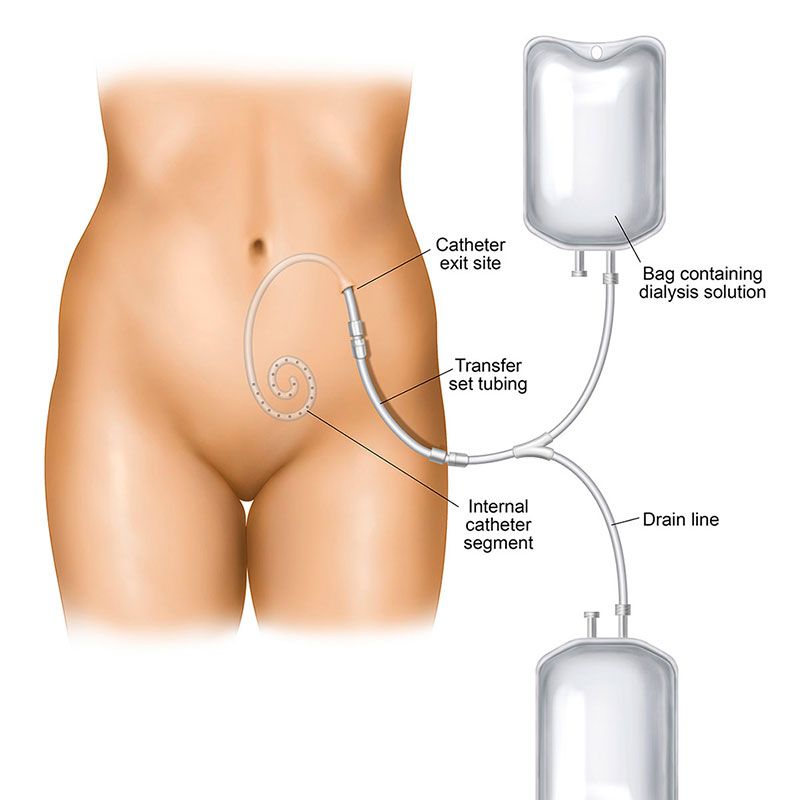 If you have been diagnosed with ESRD and must begin a form of dialysis, peritoneal dialysis (PD) is one of your treatment options. PD will require a dialysis access; however, unlike hemodialysis, no needles are required.
If you have been diagnosed with ESRD and must begin a form of dialysis, peritoneal dialysis (PD) is one of your treatment options. PD will require a dialysis access; however, unlike hemodialysis, no needles are required.
What is Peritoneal Dialysis?
PD is an alternative type of dialysis for those who do not want to use the traditional method of hemodialysis to filter blood.
PD uses the peritoneal membrane (inside lining of the abdomen) and a dialysate solution to remove the waste and excess fluid from your body. With this method, needles are not used because no blood is involved. PD is performed by instilling a sterile dialysate solution into the peritoneal cavity. The PD catheter is then closed off and the solution is left to dwell for a prescribed period of time. After the prescribed dwell time, the PD catheter is unclamped and the fluid is drained from the abdominal cavity.
This cycle of fill-dwell-drain is known as an exchange and is repeated between three to five times a day based on your prescribed number of exchanges.
What is the Placement Procedure for a Peritoneal Dialysis Catheter?

To begin, you will be given local anesthesia to numb the area on your abdomen where the catheter will be placed. Next, your physician will make a small incision into your abdomen. The catheter and its two cuffs are then inserted through the incision into the area below your skin, just above the peritoneal space.
Most of the catheter and the two cuffs remain under the skin while the tip is advanced through the peritoneal membrane into the peritoneal space. The cuffs help to keep the catheter from shifting and act as a barrier to any infectious organism.
At the end of the procedure, the external portion of the catheter is sutured in place and a sterile dressing is applied.
After a PD Catheter Placement
After the procedure, you are able to return home the same day. The dressing on the catheter should remain dry and intact until otherwise instructed your dialysis care team.
You may be prescribed medication for pain. A PD catheter requires about two to four weeks to heal before it is ready for use.
How We Can Help You
At Azura Vascular Care, we work every day to deliver far more than our patients expect. We bring our full range of medical capabilities and service excellence to every patient, every visit at each of our centers nationwide. Our physicians are highly trained and skilled at performing PD catheter placement. This minimally invasive procedure can be performed at our outpatient centers, by our interventional physicians or vascular surgeons.
If you would like to learn more about a specific medical condition leading to dialysis, or about dialysis itself, Fresenius Kidney Care is a complete resource for CKD.
If you are ready to consult with one of our specialists, find a center near you or search for one of our physicians.
Ready to Speak with a Specialist?
Search for a center or physician in your area and request an appointment online.